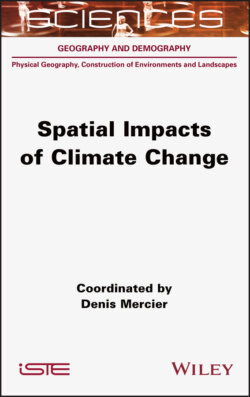Читать книгу Spatial Impacts of Climate Change - Denis Mercier - Страница 21
1.7. References
ОглавлениеAMAP (2017). Snow, Water, Ice and Permafrost in the Arctic (SWIPA). Arctic Monitoring and Assessment Programme (AMAP), Oslo.
Bethke, I., Outten, S., Ottera, O.H., Hawkins, E., Wagner, S., Sigl, M., Thorne, P. (2017). Potential volcanic impacts on future climate variability. Nature Climate Change, 7(11), 799-805.
Bourriquen, M., Mercier, D., Baltzer, A., Fournier, J., Costa, S., Roussel, E. (2018). Paraglacial coasts responses to glacier retreat and associated shifts in river floodplains over decadal timescales (1966-2016), Kongsfjorden, Svalbard. Land Degradation and Development, 29(11), 4173-4185.
Cheng, L., Abraham, J., Zhu, J., Trenberth, K.E., Fasullo, J., Boyer, T., Locarnini, R., Zhang, B., Yu, F., Wan, L., Chen, X., Song, X., Liu, Y., Mann, M.E. (2020). Record-setting ocean warmth continued in 2019. Advances in Atmospheric Sciences, 37, 137-142.
Forland, E.J., Benestad, R., Hanssen-Bauer, I., Haugen, J.E., Skaugen, T.E. (2012). Temperature and precipitation development at Svalbard 1900-2100. Advances in Meteorology, 2011(17).
Hanssen-Bauer, I., Forland, E.J., Hisdal, H., Mayer, S., Sand0, A.B., Sorteberg, A. (2019). Climate in Svalbard 2100 - A knowledge base for climate adaptation. Report, 1/2019, NCCS.
Humlum, O., Solheim, J.-E., Stordahl, K. (2011). Spectral analysis of the Svalbard temperature record 1912-2010. Advances in Meteorology, 2011.
IPCC (2014). Climate Change 2014: Synthesis report. Contribution of working groups I, II and III to the fifth assessment report of the Intergovernmental Panel on Climate Change. Report, IPCC, Geneva.
IPCC (2019). Special report on the ocean and cryosphere in a changing climate. [Online]. Available at: https://www.ipcc.ch/srocc.
Khodri, M., Swingedouw, D., Mignot, J., Sicre, M.A., Garnier, E., Masson-Delmotte, V.,
Ribes, A., Terray, L. (2015). Le climat du dernier millénaire. La Météorologie, 88, 36-47.
Lageat, Y. (2019). Les variations du niveau des mers. Presses Universitaires de Bordeaux, Pessac.
Masson-Delmotte, V., Braconnot, P., Kageyama, M., Sepulchre, P. (2015). Qu'apprend-on des grands changements climatiques passés ? La Météorologie, 88, 25-35.
Solheim, J.-E., Stordahl, K., Humlum, O. (2011). Solar activity and Svalbard temperatures. Advances in Meteorology, 2012.
Stoffel, M., Khodri, M., Corona, C., Guillet, S., Poulain, V., Bekki, S., Guiot, J., Luckman, B.H., Oppenheimer, C., Lebas, N., Beniston, M., Masson-Delmotte, V. (2015). Estimates of volcanic-induced cooling in the Northern Hemisphere over the past 1,500 years. Nature Geoscience Letters, 8(10), 784-788.
Toohey, M. and Sigl, M. (2017). Volcanic stratospheric sulfur injections and aerosol optical depth from 500 BCE to 1900 CE. Earth System Science Data, 9, 809-831 [Online]. Available at: https://doi.org/10.5194/essd-9-809-2017.
Toohey, M., Krüger, K., Sigl, M., Stordal, F., Svensen, H. (2016). Climatic and societal impacts of a volcanic double event at the dawn of the Middle Ages. Climatic Change, 136, 401-412.
WMO (2019). The state of greenhouse gases in the atmosphere based on global observations through 2018. Greenhouse Gas Bulletin, 15.
1 1 https://public.wmo.int.fr.
2 2 Zetta: one trilliard (1021) or one thousand trillion, according to the international system of units.
3 3 http://www.climate4you.com/SvalbardTemperatureSince1912.htm.
4 4 Representative Concentration Pathway (RCP), scenario expressed in watts per square meter.
